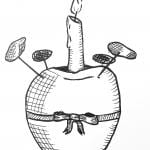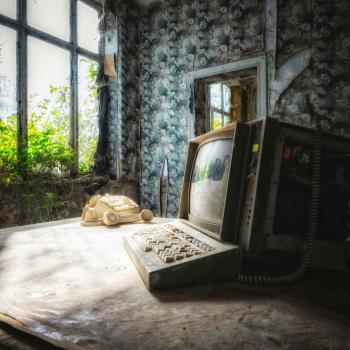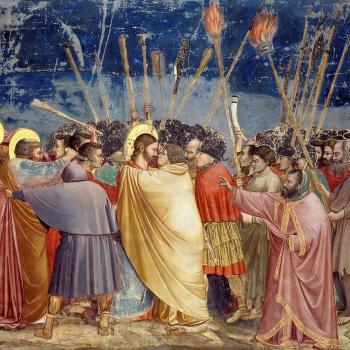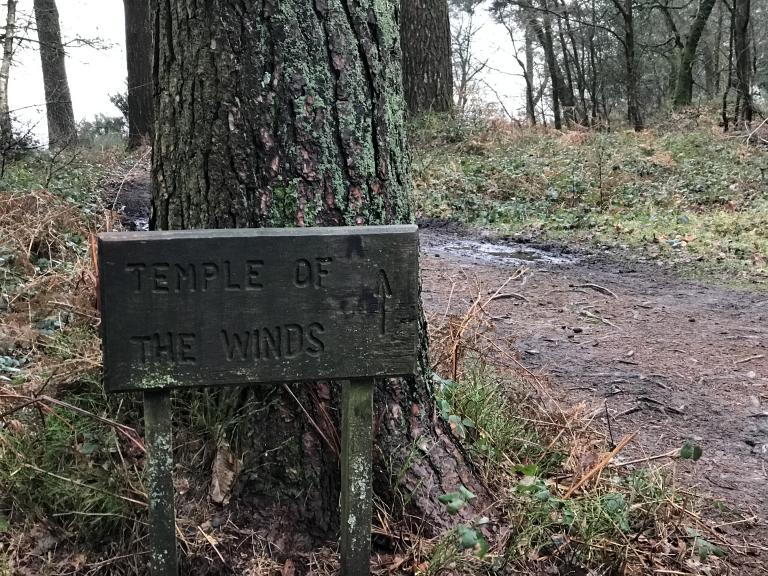
Within Traditional Witchcraft, the concept of the Compass sometimes erroneously replaces that of the Circle. This is a common misconception that frequently identifies these as synonymous terms. Whilst they share similarities, an Airts Compass, that is a Compass of Winds, is a fundamental technology at the heart of many traditions. In order to know the difference, we must first start with basics.
The magic circle used in modern Wicca usually describes a barrier, a vessel to contain power and is fixed upon the four cardinal points, the Watchtowers. These are ascribed elemental associations which partake of classical creation concepts.
The Wind Compass, on the other hand, works with the character and spirits of each direction (as Griffin Ced would say “the quality of light”) of which it typically is structured upon a system of at least 7, or 3+4.
An early teacher of mine described the Seven Directions – or Cube of Space – as a compass by which to navigate your own inner space…
Gareth Knight
It is tempting to speculate that the above quote is in reference to remarks made by the Qabbalist and ceremonial magician, William G Gray, one of Knight’s teachers and friend of traditional witch founder Robert Cochrane.
The Cube of Space referred to is the most elementary basic structure of the world as revealed through the Qabbalistic Sefer Yetzirah. The Ayreh Kaplan edition of this insightful work demonstrates through analysis of the text how the Hebrew alphabet is reckoned with the creation. In this, the Three Mothers, the letters Aleph, Mem and Sin (corresponding to proto-elements Air, Water and Fire respectively), observed as three distinct planes of height, width and depth, produce three dimensional space and a cube shape.
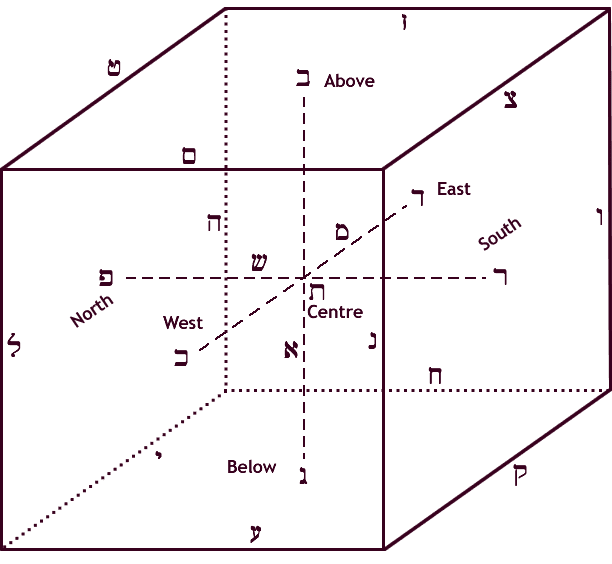
Thus, the Sefer Yetzirah shows us how the Three Mothers (AMSh), in forming the three dimensions of Space, birthed the manifest world of four elements seen in the Fathers, YHVH. Of course, the Three Mother’s aligned in this manner gives us the Seven Directions: North, South, East, West, Above, Below and Centre. Curiously, the Hebrew word for spirit, wind and breath, ruach, can also indicate a direction upon a Compass. Within my own tradition, the Three Mother’s hold a similar role together with their consorts, the kings.
The great advantage of the Witch’s Compass is it’s portability. You always have a centre wherever you are, and can work with the winds almost anywhere (with a few exceptions). Now, we must look deeper at our Airts Compass and ask ourselves how we might approach it. It is true that it points north, allows us to locate the winds, but what does that mean, to what is it pointing and how do we navigate it? The answers are vast and manifold, but hopefully we will crack the door sufficient to promote further exploration.
One of the areas of puzzlement for many new to the toolkit of the Traditional Craft person is the difficulty in locating the classical elements upon an Airts Compass. Often, people on an eastern coast find it hard to imagine the element of Water in the west when to the east is the sea. Fortunately for us, the Witch’s Compass is not elemental but spirit driven. In complete accord with historic spirit compasses and lists of Solomonic and Goetic literature, the compass operates perfectly well in these circumstances.
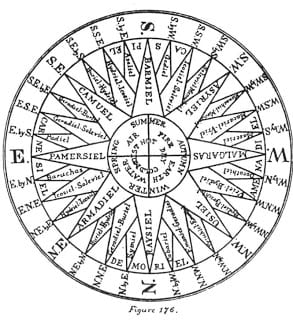
On a practical level, there are a few things we can do to engage the compass and develop familiarity with the spirits that can be found there. Seasonally, there are significant indicators that can be observed and which our megalith building ancestors utilised to great effect, observing the position of the sun as it traverses the solar year.
Speaking of the Tides, Nigel Pennick includes alongside the eight directional winds of the standard witch Compass (the cardinal points and cross-quarters), the day is also divided into eight Tides[1]. Incorporated in this magnificent technology is the character or spirit of each direction at each moment, thus spanning space and time. At particular given points within the Compass, it is evident that certain directions are in the primacy. For example, the seasonal direction which is current, which shares a direction with a particular Tide in the day is, of course, going to have a certain identity.

Praticum
In order to familiarise ourselves with a Compass and acquaint ourselves with our own tradition, we must be prepared to face each direction.
Firstly, you will need to choose your timing carefully. You will need a clear day, where the sun will be visible throughout.It is important that you can commit the whole day to this activity, so chances of interruption should be minimal.
Secondly, you will need to choose a location where you will be relatively undisturbed for the whole day, whether that is a private garden or an open space, a common or public park. In selecting a location, make sure that it is reasonably flat and even, and that the sun is readily visible for the majority of the day from rising to setting. It is advisable to perform some reconnaissance on your preferred location around similar days to see what conditions and activity is like.
Thirdly, the only equipment you will need are a long, straight stick or stang and several pebbles or stones. Any food or drink you might want throughout the course of the day would be appropriate, too.
Fourthly, a pen and paper or notebook is useful to record any experiences while the memory is fresh, and to refer back to in confirming any personal gnosis.
These simple requirements necessitate a little flexibility, creativity and compromise in order to accomplish. If these challenges do not pose a difficulty for you, maybe add another factor: choose a seasonal marker such as an equinox or a solstice.
Try to get to your carefully selected site before sunrise if possible. Clear any debris around the area and place your stick or stang in what you perceive to be the centre of a circle of reasonable size. Spend a few moments reflecting upon the world tree and identifying with the axis mundi or world centre. Ground yourself at this spot and make a simple offering if you feel so inclined. Now, as the sun rises in the sky, the stick marker will cast a long shadow upon the ground. Place one of your marker pebbles or stones at the position the sun rises if it is dawn. (If not, choose another moment when you intend to engage the practice and continue as follows) Turn 180 degrees to the shadow cast by the stick and place a second stone or pebble at the tip of the shadow.
Now spend some time facing the direction at which the sun was when you first marked it. Empty yourself of all mundane thoughts and simply be. Imbue yourself with the quality of light at this direction, the feeling of the wind, the sensations that accompany this direction. When you have spent a reasonable amount of time in this activity, move to face the shadow marker and do the same. What you are aiming to achieve is some small experience of the quality of the light and the shadow it casts. Do this for several more directions throughout the day until you feel that you have had a full and complete experience of the Compass. This could be from sunrise to sundown, before the dark part of the Compass when the sun is hidden[2].
It might help you to write down any feelings, thoughts or visions that occur during this practice and chase down any references if you feel that personal gnosis has been gained. Undoubtedly, your apprehension of the character of the directions that you encounter will coincide with that of others and will be inherent within the structure of the Compass, taking into account the earth, sun, wind and stars. Nuance, however, will give you a flavour of your own compass which will be with you wherever you centre yourself and return to. When you are satisfied with the day’s work, make an offering of thanks and depart, leaving no trace and taking all rubbish with you.
When you have digested the experience, you may want to return to the same location and repeat the exercise at a different time. If possible, doing this over a year at the eight festivals of the Wheel of Life would produce a remarkable degree of familiarisation with the Airts Compass. As your markers at the light and shadow move, you will notice that a circle is formed. Significantly, though, it will not be a perfect round or circle but shifts, moves and is fluid as though resonating in response to the time and tide. This is a significant difference with the magic circle which is fixed. In addition, you might sense that the direction with which you are working makes you aware of the Compass around you and this, in effect, acknowledges the Compass as temenos, sacred space between the worlds (a similarity with the Wiccan’s circle), a piece of land cut away from the mundane and marked as sublime and separate for that moment. This is not uncommon, but it is not the primary function of what we are doing here.




